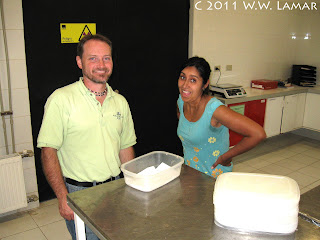Inside the New Exhibits | part 1 — plants

The original Frogs of Panama exhibit One of the first assignments in my new role was to design and coordinate the opening of three new frog exhibits for the Fuqua Conservatory lobby. The stand and the 3 aquaria were already being built to replace the current Frogs of the Panama Cloud Forest exhibit. This enormous terrarium (pictured with me, above) was one of the original orchid exhibits, and was showing signs it could not contain a miniature cloud forest much longer. I was delighted to hear that Robert Hill (my predecessor) and Mike Wenzel (plant records guru) had already made some headway into finding plants that would not only be accurate to the regions of which they were depicting, but might also feature plants of focus in our conservatory and conservation collections. We decided the regions we would focus on for the new exhibits would be Costa Rica , the Amazon basin, and of course a downscaled version of our previous Panama exhibit. To be honest, in previous terrariu

